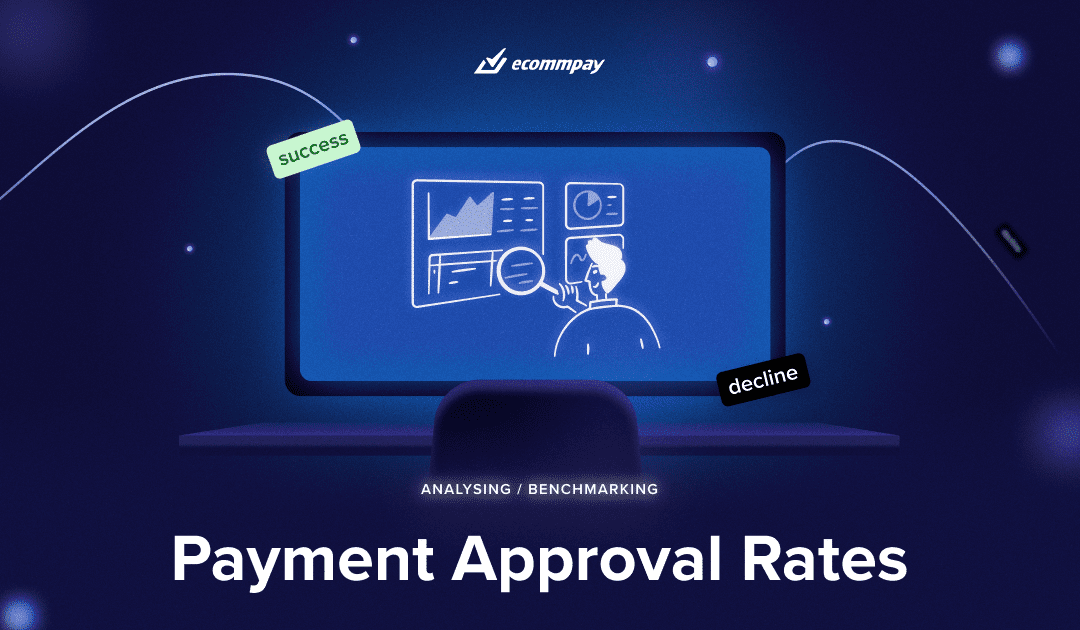By Artur Zaremba, Product Owner at ECOMMPAY
In the world of online and digital payments, the term “acceptance rate” (also known as approval rate) refers to the percentage of successful payment attempts versus those declined. Acceptance rates are an essential metric for merchants to understand, because ultimately, low figures mean that a payment flow needs further optimisation, leaving potential revenue on the table.
This article will explain why some payments are declined at checkout, how acceptance rates are calculated, and how they can be segmented to give a more detailed picture of your payment flow.
Why aren’t all payments accepted?
There are many reasons why a transaction might fail, but broadly speaking, declined payments will usually fall into one of two categories:
Soft Declines
Soft declines describe issues with transaction processing. In other words, the issuing bank approved the payment, and the card was working correctly, but something failed during payment authorisation. Soft declines could potentially be resolved if resubmitted for authorisation, which may result in a successful operation. Examples of soft declines include, but are not limited to:
- Fraud prevention: There are lots of safeguards in place to ensure customers are protected against online fraud. Although top payment providers have high success rates at weeding out fraudulent transactions, false positives occasionally happen. Payment will be declined if a legitimate purchase is flagged as suspicious, and attempts can also be blocked if a customer’s purchase looks unusual to a card issuer. In these cases, customers could contact their issuing bank to confirm that the payment is secure and resubmit the payment attempt afterwards.
- Temporary technical problems on the Issuer side: There could be temporary technical issues on the issuer side, which may result in a failed operation. Some of the operations could be successfully resubmitted as well, in case they are repeated in a row. At the same time, some of the authorization decline codes intend authorization resubmission that could be enabled as an option on provider’s hosted payment page.
Hard Declines
Hard declines are authorisation declines that cannot, under any circumstances, be resolved by further payment attempts. The only way to fix a hard decline is for the owner of the card to contact their bank to request a card be re-issued or unblocked, such as in the following examples:
- Captured or stolen card: In this case, during authorisation, the issuer submits information that the card is stolen or captured, which means further authorisation attempts will not be successful. Moreover, following Visa/Mastercard regulations, any subsequent authorisation attempts should be blocked immediately on the acquirer side.
- Expired card details: This is another reason for a hard decline and is more common when a customer’s card is used for a subscription service or a recurring payment.
Now that you have a basic understanding of why payments can be declined, let’s look at why it’s important to measure payment acceptance rates and the various ways of doing that.
Why Payment Acceptance Rates are a Useful Metric
Analysing acceptance rates can help you optimise your payment flow and make better decisions for the future. If acceptance rates are low, then you’re invariably losing revenue, as potential customers are less likely to make repeated attempts to purchase your goods or services.
How are Payment Acceptance Rates Calculated?
Payment acceptance rates are usually described as a percentage. For example, if a business experiences a 97% payment acceptance rate, 3% of attempted transactions have been declined.
As you’re now aware, there are many reasons a payment could be declined, so it’s often helpful to break down the gross percentage into segments, to get a more detailed picture of where and why declines are happening.
Different Ways of Segmenting Acceptance Rates
Acceptance Rate by Customers’ Successful Purchases
This approach to acceptance rates can help to give more defined insights into your payment flow. Suppose you’re simply interested in getting as many customers as possible to pay for your product or service. In that case, you might find it reasonable to disregard declined payments if they form a sequence that eventually results in a successful purchase.
For example, if five payments are attempted in a row, and the last one is accepted, the sequence could be counted as a single successful transaction, disregarding the four declines. If this approach fits your business model, it could be more accurate than looking at gross acceptance rates. However, it’s worth mentioning that a less scrupulous payment provider could also use this calculation method to hide their own failures.
Soft and Hard Declines Approach
Making the distinction between soft and hard declines is useful when you need to understand the proportion of transactions that could be successfully re-authorised by improving the payment flow on your side. Hard declines usually can’t be resolved by making subsequent payment attempts, whereas soft declines can be reduced through the actions of your payment provider, or by improving customer service.
Other Segmentation Methods
- By payment method: Does the payment acceptance rate vary depending on whether customers use a credit card or a bank transfer, for example?
- By billing cycle: Do acceptance rates drop for recurring billing (subscriptions) versus one-off payments?
- By location: Do acceptance rates differ based on buyer location.
All of the approaches to segmenting payment acceptance rates can be useful. You can even use them in combination to get a more granular picture of your payment flow and the overall performance of your checkout. By gathering as much data as possible, you’ll be able to formulate a more thorough action plan that you and your payment provider can use to improve your bottom line.
In Conclusion
Analysing acceptance rates can be a great way to understand how and why payments fail and how to mitigate problems at your checkout. Maximising approval rates can help your business gain new customers and prevent existing ones from taking their money elsewhere.
Even information about hard declines can prove helpful, allowing you to investigate potential issues by contacting issuing banks. Armed with a good working knowledge of acceptance rates, you’ll also be able to make more informed decisions when choosing a new payment provider.
Find out more about the acceptance rate analysis from the in-depth article.




































